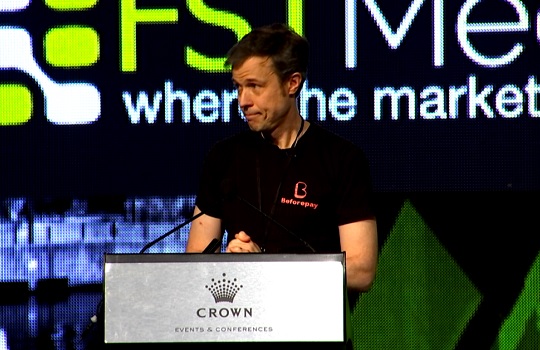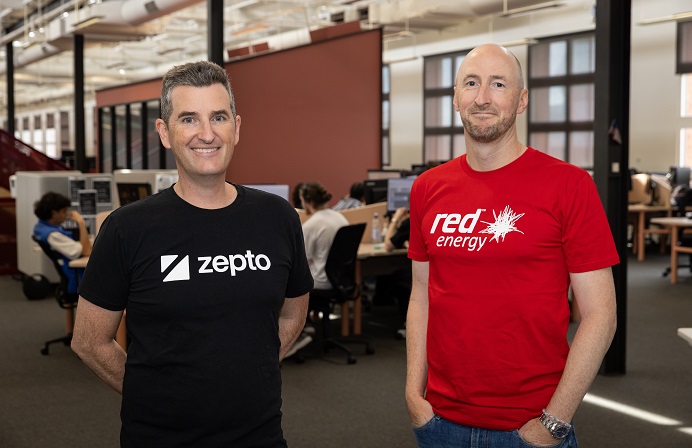
Australia’s financial services industry should be a fraction of its current size and market cap, with its currently bloated operating structure and “clunky” systems proving a major “tax on society”, according to former big four banking executive and current Beforepay chief Jamie Twiss.
Twiss, a veteran of the big four banks, formerly serving as chief strategy officer and chief data officer at Westpac, argued that the industry should be reduced to potentially a tenth of its current size, “freeing up” upwards of 400,000 people for more socially beneficial endeavours.
This surfeit of staff is in large part a by-product of the “terrible customer experience” offered by FSIs, according to Twiss, with customers forced to spend “more than half their time wrestling with bulky products and systems that don’t quite work”, while staff must reckon with the shortfalls in existing systems and processes created by persistent legacy systems.
Australia’s local financial services industry is made up of around 490,000 employees, roughly four per cent of the country’s entire workforce.
“We could have those people out there teaching our children… healing the sick or creating amazing art. Instead, we have them in back offices comparing numbers on documents,” Twiss said as part of his keynote presentation at the recent Future of Financial Services Melbourne 2022 conference.
“It’s a tragic waste of human resources that we’ve not been able to solve for these clunky systems and processes that lead to hundreds of thousands of people having to manually stick stuff together and get the wiring right and simply try to move this over here.”
“Most of those 490,000 people,” Twiss added, “are doing work that is simply trying to help customers deal with really obsolete technology stacks, difficult product designs, and clunky processes.”
Substantial time and effort are also wasted in servicing customers at the front office – an effort, Twiss noted, to make up for the fact that systems remain “clunky” and unintuitive, despite substantial efforts by banks and other FSIs to digitally transform.
“We’re the only industry in the world where we’ve trained our customers to expect that they can walk into an office space or a retail space downtown and get help with some technical problem that we have.
“And we’ve trained them to do that in the form of bank branches because systems are so clunky.”
The ultimate goal, Twiss argued, should be to close these service desks.
Further, unlike the health sector’s successful, and highly engaging, “gamification” of exercise and good health practices, efforts to gamify FSIs’ digital retail services have been less than stellar, according to Twiss.
“We are paying customers to do stupid things that waste their time and drive up the cost base of the industry,” Twiss said.
“The pricing models that we have today are such that, if you religiously log on to your account and you shuffle money from here to there before your credit card payment is due, then you move the money back out of your transaction account to your savings account as soon as you get paid, you will pay a lower price for financial services than if you just sit back and don’t do anything – this is despite the fact that none of that activity is meaningful.
“We are paying people to play stupid little games that no one wants to be playing.”
For Twiss, FSIs are effectively forcing customers to engage with their services “in a way that helps absolutely nobody”.
“And we’re doing that because we have these very arcane pricing structures, whereby two people who have a transaction account will pay wildly different prices based on their balances and their behaviour, despite the fact they probably cost the same to the bank – and that cost might well be zero.”
Back-office – way back
For an industry now coming into its third decade of digital transformation, most change has been achieved only at the surface level, with the back office remaining beholden to “19th Century” processes and thinking, according to Twiss.
“I’ve yet to see a transformed bank. I’ve yet to see [the expected outcomes] from these ambitious programs; I’ve yet to see the situation in which I think, ‘Wow, you’ve done it! You are now simple and agile, and it’s all easy’.”
Citing the still arcane mortgage processing centres found within the big banks, Twiss noted that while the work is now handled “on screens… the actual substance of the work is straight out of the 19th Century”.
“Somebody’s looking at this document, they’re checking that those two numbers are the same, and they’re moving a number from this document into a form over here. And the computer adds up the numbers on the form.”
Despite the ability today to reduce most of these processes to “bits of code” – much like share trading today, Twiss said – most banks still “have enormously manual processes sitting on top of these obsolete technology stacks”.
This persistence of legacy is not due to any form of “laziness or negligence” or a lack of smarts within the industry, Twiss stressed. The bar for change and investment required is simply seen as too high. “It’s all seen as very hard”.
“We’ve just not managed to solve for a financial services industry that is the size it should be.
“We should be a fraction of the size we are in terms of employment, market cap[italisation], and revenue.”
The choice for incumbents: Radical transformation or steady decline?
Twiss takes a rather grim view of industry incumbents’ ability to achieve successful wholesale transformation, particularly on the foundation of their existing tech stacks.
Yet, for the former big four banking executive, incumbents really have only two options: extricate themselves entirely off legacy technology and processes and undergo a complete remodelling of their business practices and systems, or face a slow and steady – but still profitable – decline.
“I’ve heard so many incumbents who have a plan that their technology will get ‘fixed’, that they’ll get cleaned up in the next five or 10 years – it’s always a time period that’s just outside the career horizon of the senior executives of that bank.”
“This hasn’t worked for 30 years. I would love to be proved wrong; I’d love to see someone do it and succeed, but I don’t think it will ever happen.
“I think it is time to give up and say, ‘We are not going to fix these 50-year-old technology stacks. Instead, we’re going to build something amazing over here, and maybe we’ll migrate our customers over or maybe it’ll just be a new proposition.”
Incumbents must recognise and take advantage of “the money, the customers, the regulatory position, and the privileged access to capital” they now have to “fight a rear-guard action all the way down” against industry challengers.
“We’re going to do something with the resources we have; we’re not going to kind of keep fooling ourselves that we’re going to be able to fix the technology, because that just that just hasn’t proven possible for anyone anywhere in the world.”
The other option, “the economically rational” approach, is to simply extract as much value out of one’s current infrastructure mix, “throw off tens of billions in dividends”, and ready for eventual irrelevance.
“You can create a lot of value on the way and having that decline over 10 years or 20 versus five [years] is a huge value differentiator.
“It might be depressing advice to incumbents, but I think that’s the right path for them to think about.
“If you’re not going to rip off the band-aid, which might be the right call… you’ll have to blow yourself up or get blown up.”
Following a successful career serving at some of Australia’s biggest banks, including Westpac and CBA, Twiss last May was appointed chief executive of Beforepay, Australia’s first pay-advance service.
Twiss, as a relatively newly minted member of the fintech world, also urged challengers, or “attackers”, to go beyond simply “re-skinning the old approach”.
“You might create value that way, but you’re not really leading us to another to a brighter future – you’re just doing the same thing with kind of a funky-looking app.”
“How are you going to create value? And at some point, especially now, you probably want to think about making money.
“Do you actually have unit economics that will get you there? You can build and scale a business where you sell dollar bills for 80 cents, but I don’t think that’s actually leading the way anywhere; that’s just shovelling venture capital money out the door of the plane.
“You might feel great for a while, and you might personally get very rich, but you’ve not actually changed the industry.”





